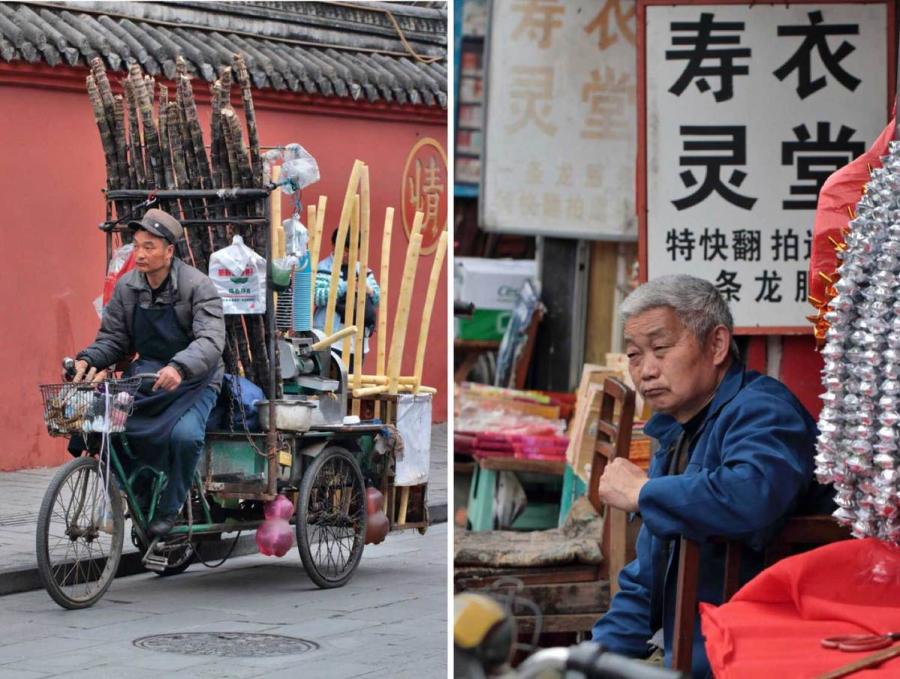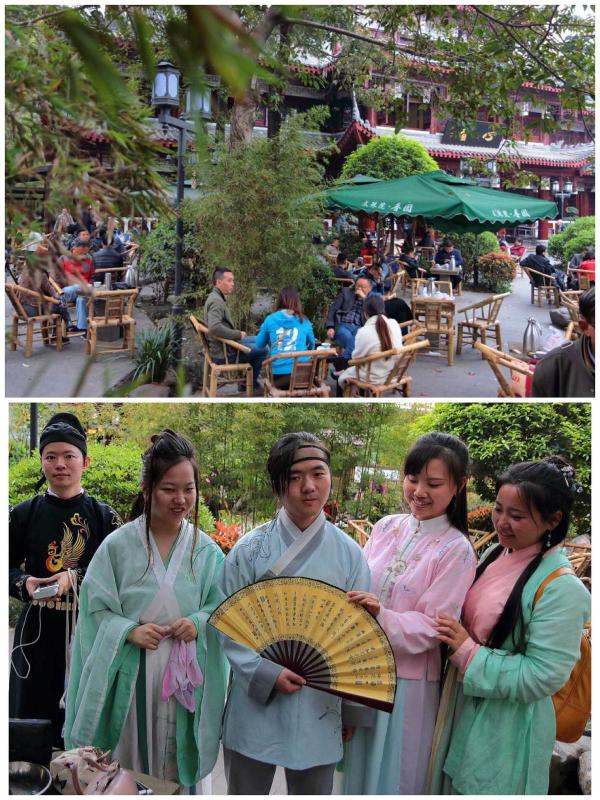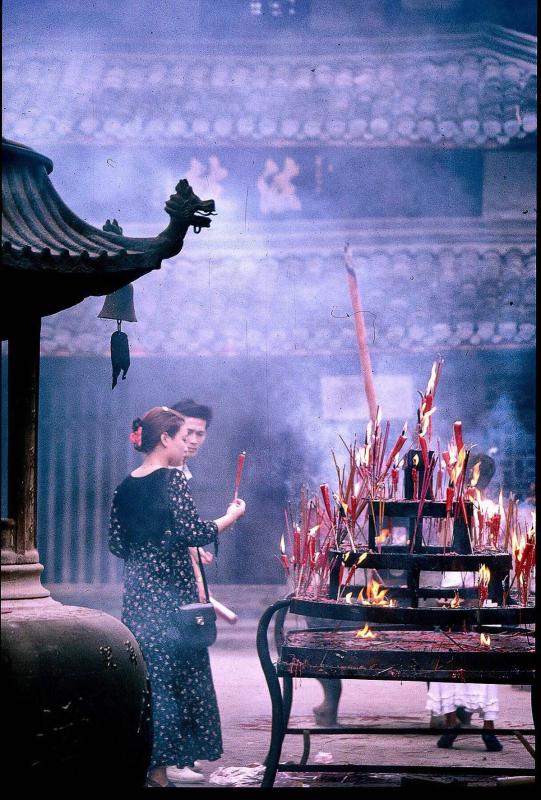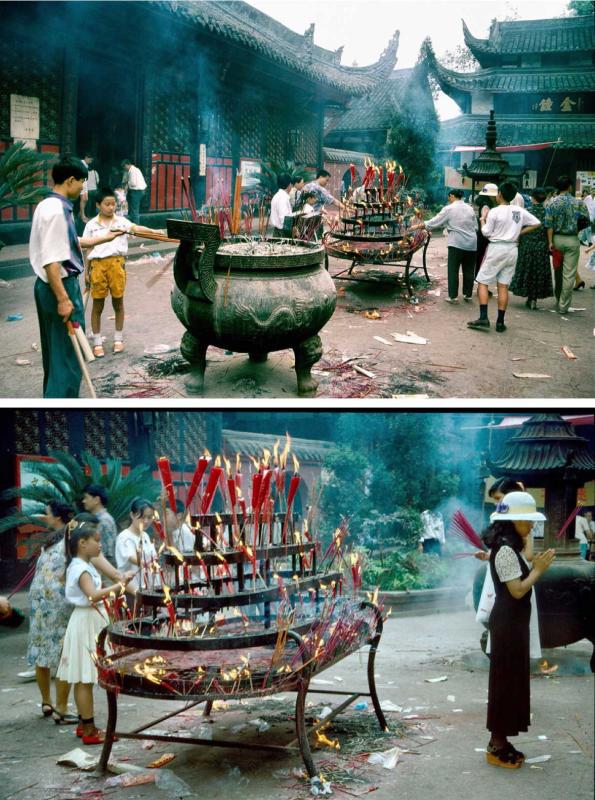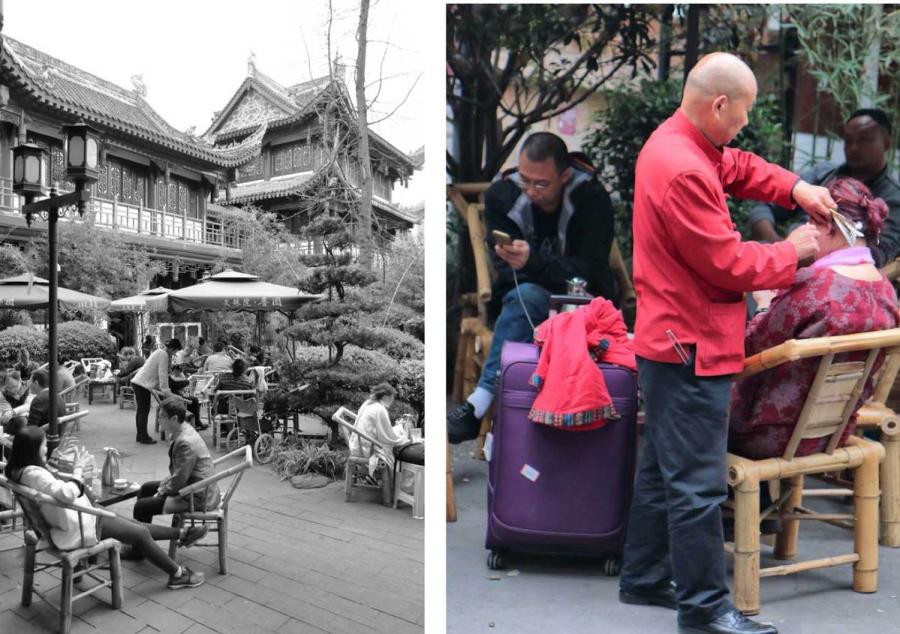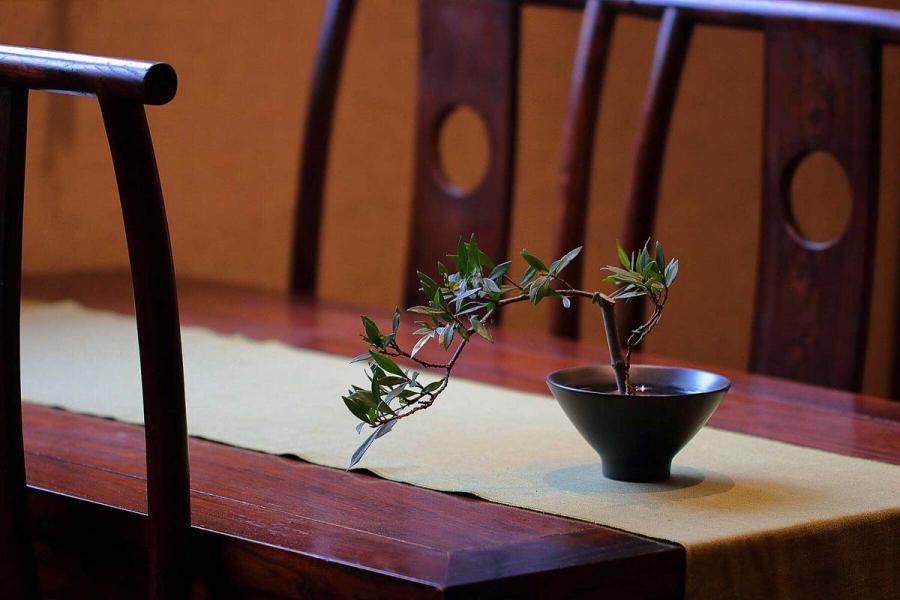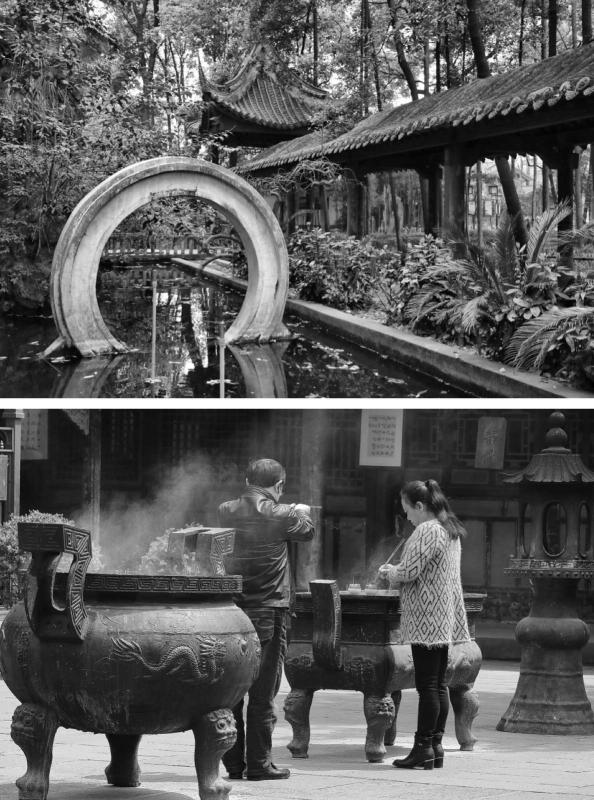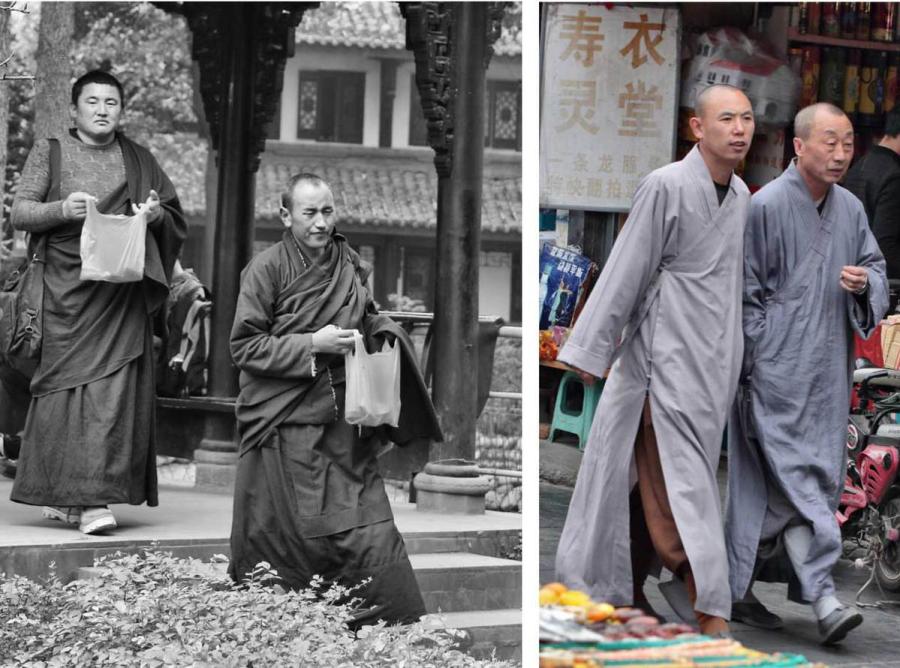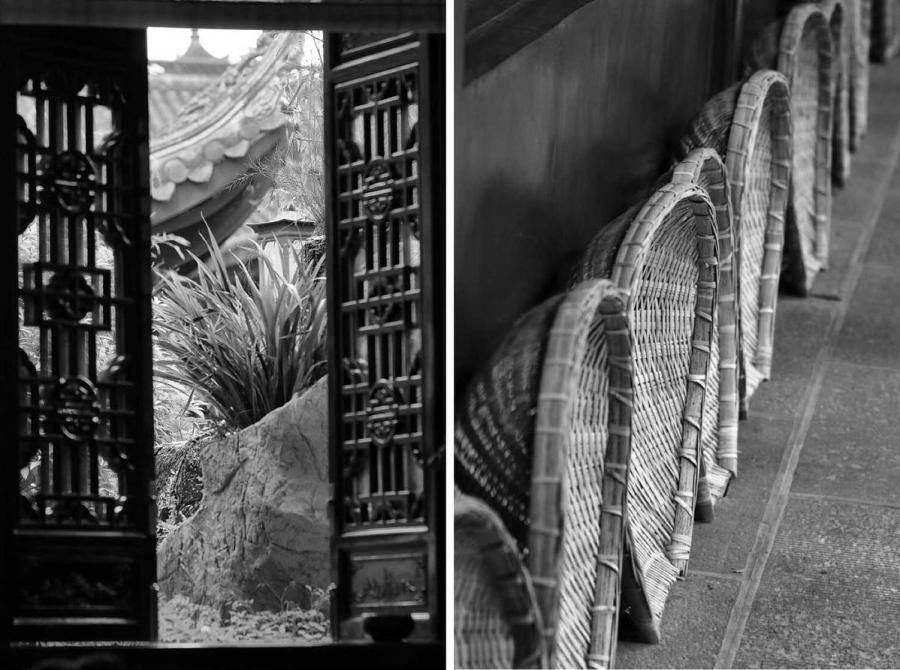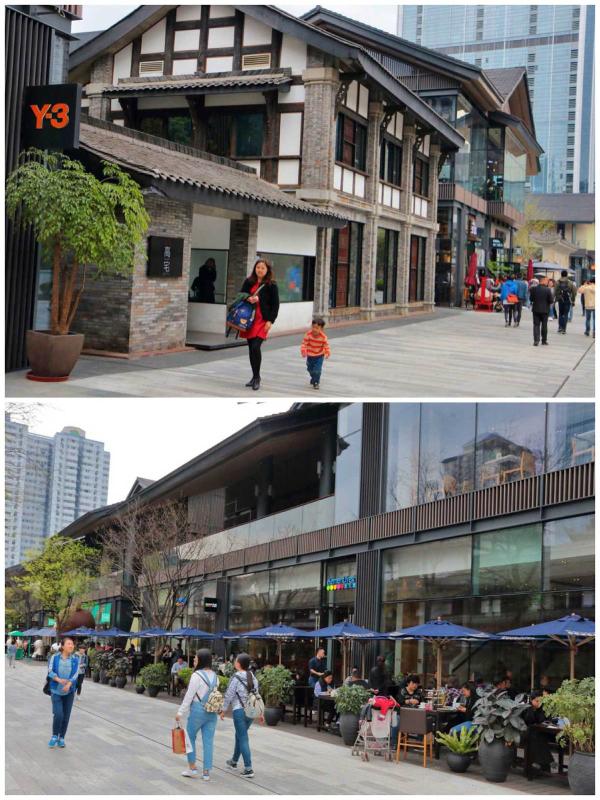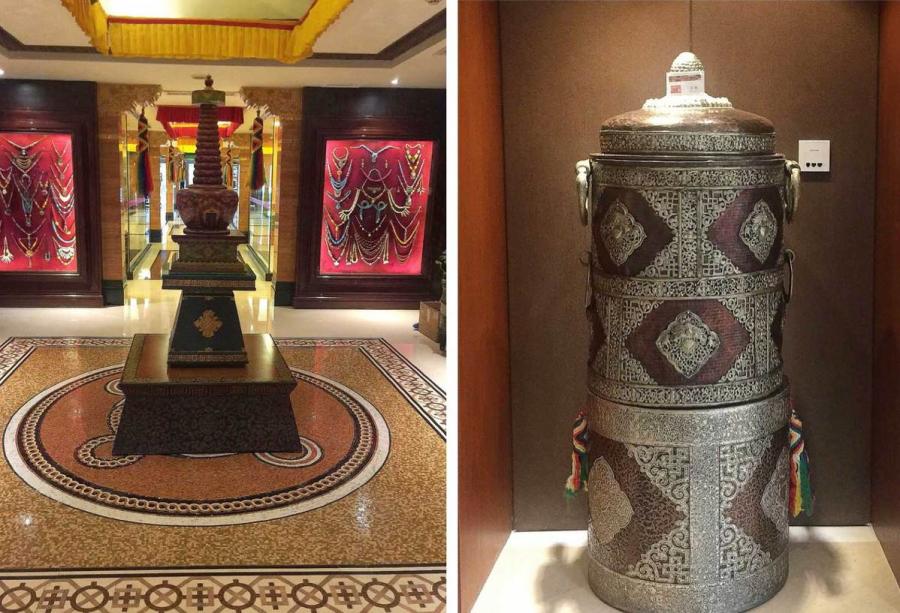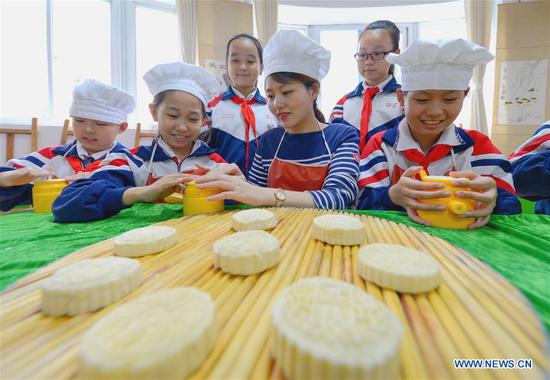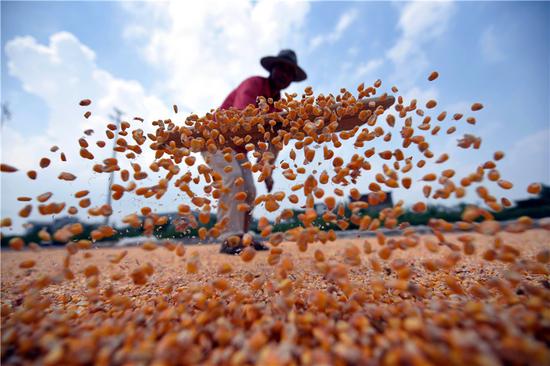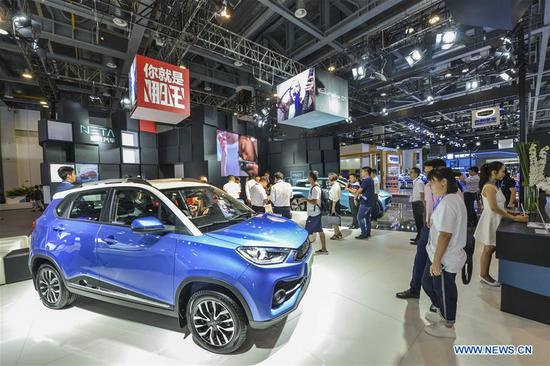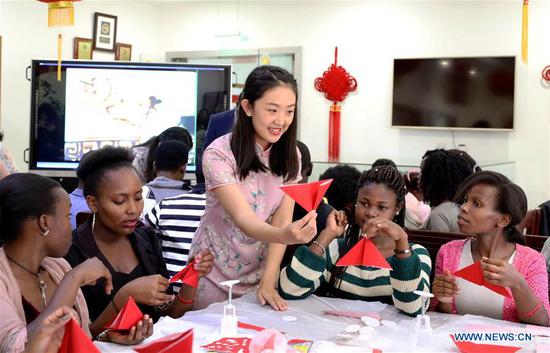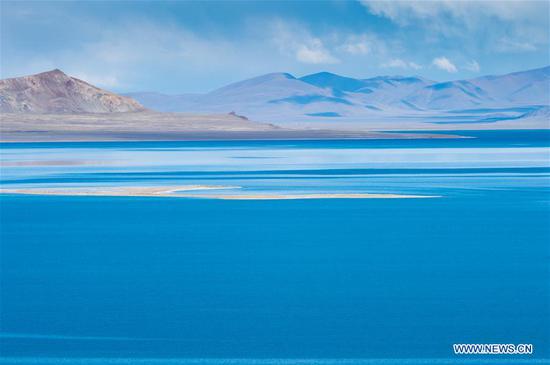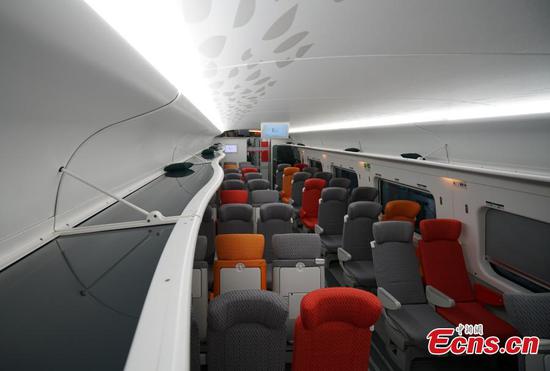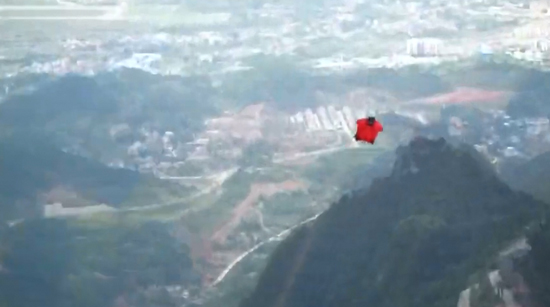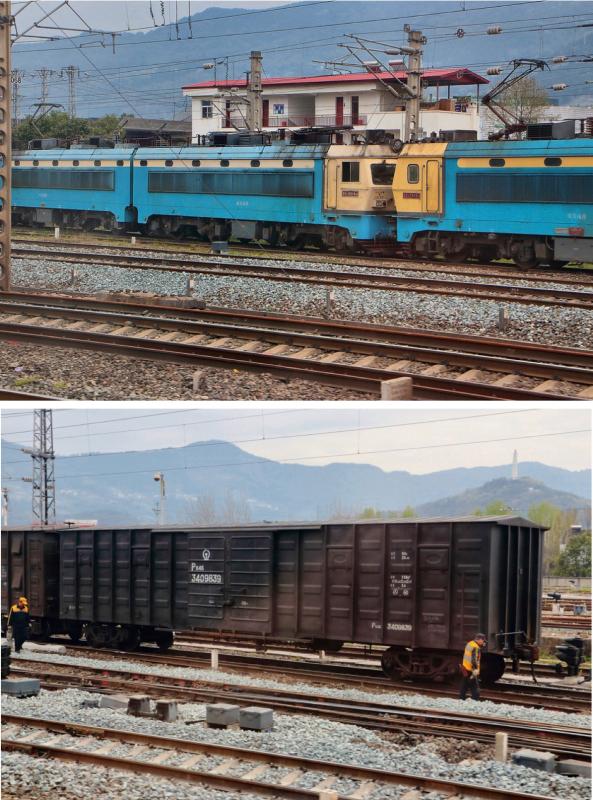
Baocheng (Baoji-Chengdu) Railway was electrified in 1961. 2017 (Photo by Bruce Connolly/chinadaily.com.cn)
Throughout my life of travel “riding the rails”’ has remained a passion. A lengthy train journey can be both a relaxing and rewarding way of discovering a country, indeed a continent, such as coming overland to China in 1987. At every opportunity I still take to the rails, but no matter how often I travel sleep remains intermittent due to an incessant desire to look out on the landscape or at every passing station.
Away from its major cities China in the 1990s was a country in various stages of development. Rail travel was an excellent way to observe some of what it was going through, although in those early days acquiring a ticket could be challenging.
In 1994 planning a journey from Beijing across southwestern China by train, bus and boat, Sichuan’s capital Chengdu was my initial destination. Rail trips were different but at times still quite similar to today. Beijing Railway Station was then the capital’s only main rail terminal with trains departing/arriving nationwide. Thankfully the metro provided convenient transportation from my hotel, near Yonghegong (Lama Temple), to the railway terminal. Quite daunting, however, was the size of crowd waiting across that station’s vast concourse.
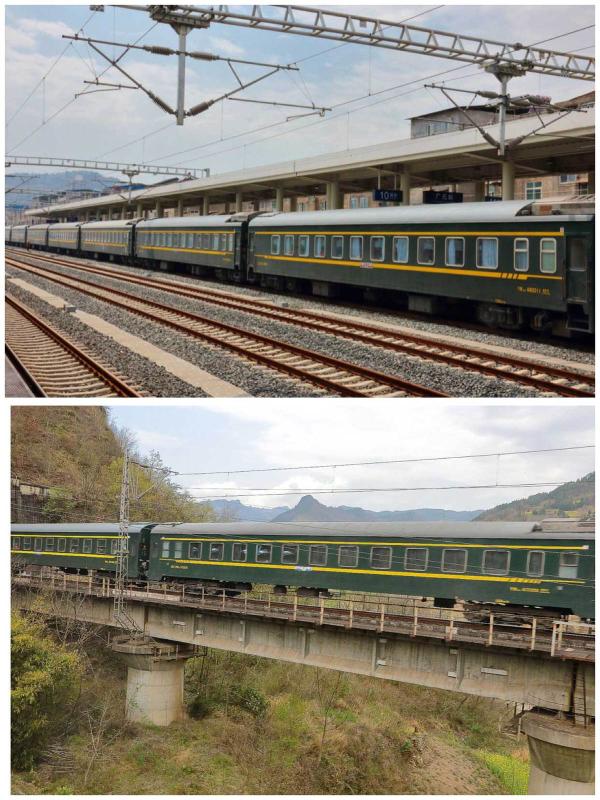
Iconic ‘green’ trains on Baocheng Railway 2017 (Photo by Bruce Connolly/chinadaily.com.cn)
Today’s computerized information boards did not exit but there was a special waiting room that foreigners could use. From there I was directed to the train for Chengdu. Long before today’s high-speed “Fuxing” rolling stock, most services were composed of loco-hauled 18 green-painted conventional coaches. From carts on the platform drinks, fruit, instant noodle bowls could be purchased. I stocked up, not realizing that catering trolleys would be regularly pushed along the train’s corridors and there was a dining car.
Departing Beijing at 6.00 pm, I decided to give the dining car a try. Quite different from today’s smart onboard cafes, which are more for collecting drinks and airline-style packaged meals, the older trains had proper restaurant facilities. In a bustling kitchen space fresh food would be stir-fried over coal-fired burners before being passed out through a hatch and delivered to passengers such as myself. The menu, handwritten on a blackboard, I settled down at a table to work my way through egg/tomato soup with pork/green peppers washed down by warm beer - yes, in 1994 beer was often served at room temperature. Over the next two days the dining car became an enjoyable routine and an opportunity to meet fellow travelers like myself heading down to the southwest.
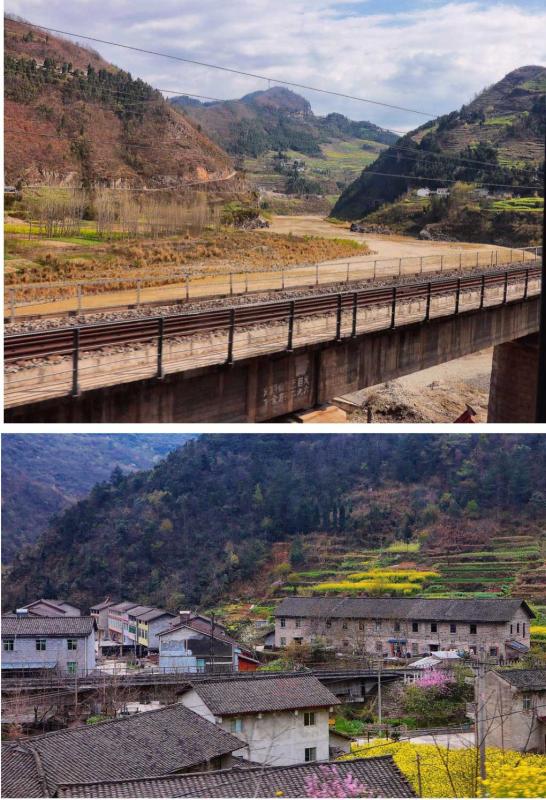
Baocheng Railway in mountainous northern Sichuan 2017 (Photo by Bruce Connolly/chinadaily.com.cn)
The first morning after passing through Taiyuan the train crossed the Yellow River into Shaanxi and soon we were rolling through the loess lands toward Yan’an. Alongside the tracks, cut into sides of narrow gorges there were the iconic cave dwellings, homes to people of the “yellow earth”. I gazed as villagers pushed bicycles up steep slopes while herders watched over sheep and goats. Vegetables, particularly corn, were cultivated where land was flat or terraced. Steam locomotives hauled lengthy freight or coal trains.
Xi'an, where the fabled Silk Road terminated, its historic walls could be seen from my compartment before we moved west across the flat terrain of the Wei River Valley. Horses hauled wooden carts along quiet tree-lined roads before the train pulled into Baoji, a major railway junction. The line initially I was on would continue west toward Lanzhou and ultimately Xinjiang but my train turned to head south along the Baocheng (Baoji-Chengdu) Railway. At that time I had no understanding of its significance in China’s transportation history. Originally proposed in Sun Yat-sen’s 1913 China National Railway Plan, construction finally started in 1952 from Chengdu, opening on January 1, 1958. In 1961 the Baoji-Fengzhou section became the first electrified line in China.
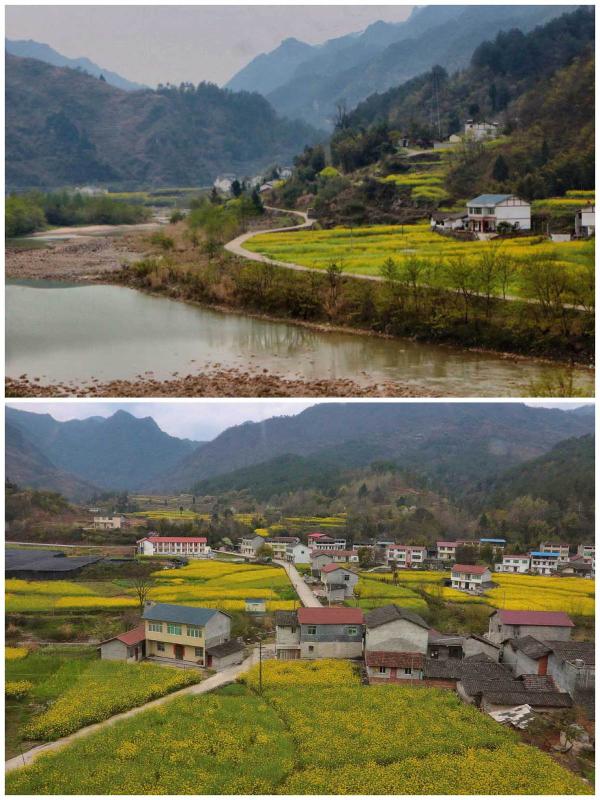
The beauty of northern Sichuan alongside the railway 2017 (Photo by Bruce Connolly/chinadaily.com.cn)
From Baoji we were “double-headed”, hauled by two powerful locomotives for the route would be leading up into mountainous northern Sichuan. I noticed frustratingly that daylight was slowly fading. Photography!
Initially this mostly single-track line with passing loops climbed through spectacular scenery, crawling along ledges above at times rivers cascading through narrow gorges. Lengthy tunnels penetrated steep forested slopes. Back in the dining car it was difficult to eat for I was constantly trying to watch such magnificent scenery despite the encroaching darkness. Stopping at remote, alpine stations, lengthy freight trains waited to head north while villagers ran alongside our coaches offering water, fruit and boiled corn cobs to passengers seated at open carriage windows.
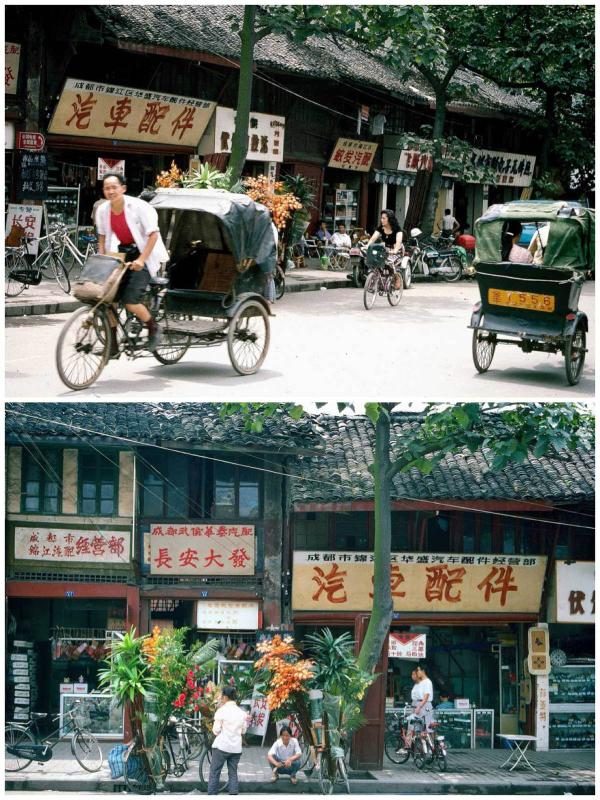
Older Chengdu streets 1994 (Photo by Bruce Connolly/chinadaily.com.cn)
After several hours, the watershed was reached - rivers would flow toward the Yangtze instead of previously the Yellow River basin. The first of its two locomotives was detached before the train started on a long overnight descent toward Chengdu. Arriving at 6.45 am it was sadly “goodbye” to fellow passengers before heading down Renmin Road to find the Tibet Hotel. Time for a shower, breakfast and rest before starting to discover the city.
Last year, 2017, I retraced that journey from Chengdu on train T8 back to Beijing. Green coaches, with a dining car serving up spicy Sichuan cuisine with cold drinks, it was daylight all the way to Baoji. The scenery breathtaking, enhanced by extensive fields of yellow maturing crops. A truly stunning journey that also revealed the ongoing work toward completion of the Chengdu -Xi’an high-speed railway. The illustrations of the Baocheng Line are from that journey that still retained some of the feelings of my earlier excursion now 24 years previously.
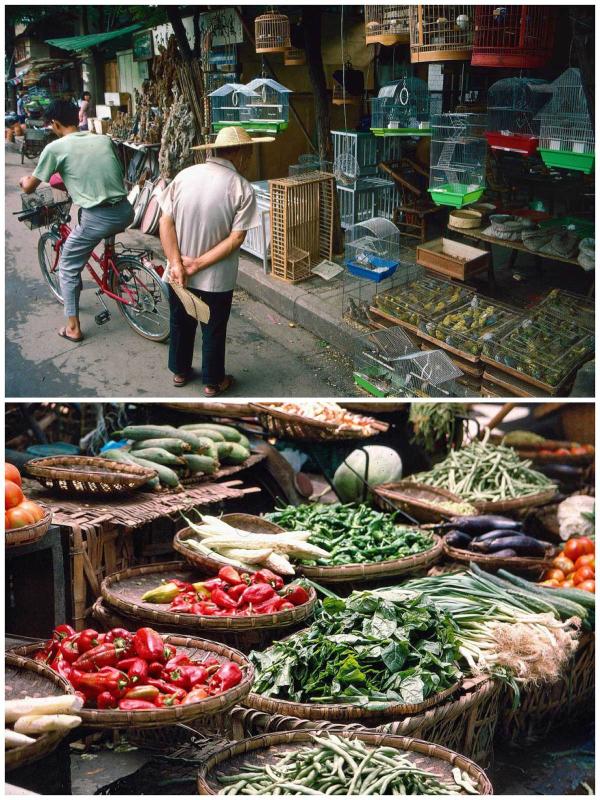
Bird market. Vegetable stall Chengdu 2017 (Photo by Bruce Connolly/chinadaily.com.cn)
In 1994 Chengdu seemed so different to Beijing where for several days I had been living within a hutong community at Beixinqiao. Walking south along Renmin Road everything initially felt much wider, straighter and higher than older Beijing, but I would soon also discover older Chengdu.
Chengdu in the 1990s was a destination/starting point for international travelers wanting to discover China away from the major cities. Then, the only scheduled flights to Lhasa were two daily morning services from Chengdu. The city was also a starting point for an adventurous journey to Lijiang in Yunnan - first by train to Panzhihua followed by a lengthy bus ride along mountainous roads. A consequence was the relatively inexpensive travelers’ hostels and cafes along the Jinjiang River. These were good places for swapping information with fellow adventurers while partaking a range of comfort foods to fortify oneself before setting out on more travels.
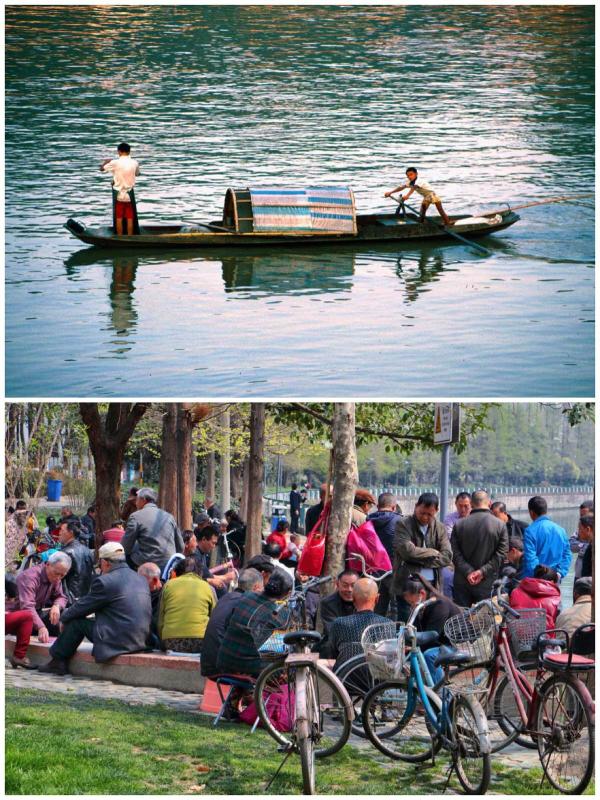
Fishing on Jinjiang River 1993. Local people socialising beside the river 2017 (Photo by Bruce Connolly/chinadaily.com.cn)
It was midsummer, Chengdu was at its hottest, but I insisted on walking alongside the river where I spent an afternoon relaxing, watching wooden fishing boats drift past, experiencing spicy Sichuan cuisine while amazingly reconnecting with travelers first encountered on the train from Beijing. After a day doing little, a motorcycle cab carried me back to the hotel, there being no metro in 1994.
I was discovering the relaxed atmosphere that Chengdu remains renowned for and starting to feel I wanted to stay as long as possible. Indeed on one occasion passing a restaurant with loud music emerging, I was suddenly “dragged” into a wedding party!
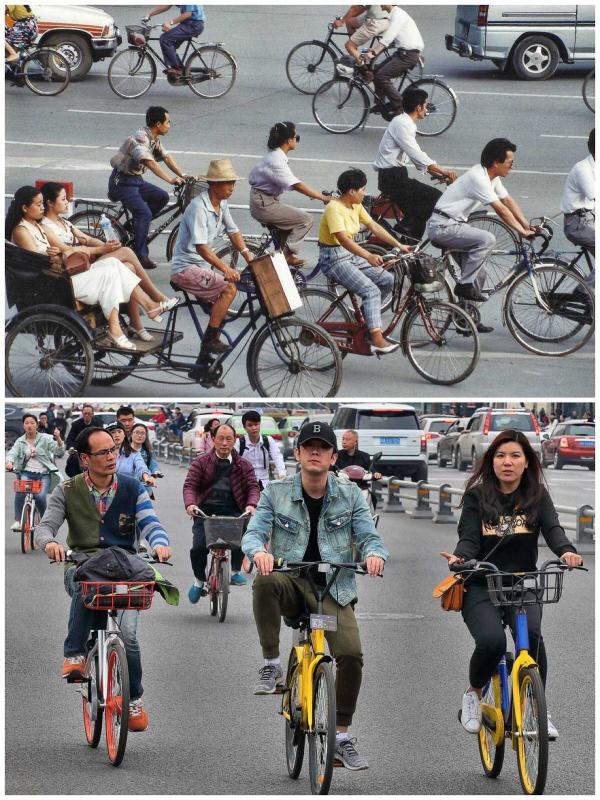
Cycling at Tianfu Square 1994 and 2017 (Photo by Bruce Connolly/chinadaily.com.cn)
Next morning a beautiful day dawned and after breakfast I walked down Renmin Road before coming upon a side alley, Wenshuyuan Street. It was lined with brightly filled stalls trading incense sticks, small statues, “funny money” and much more. With curiosity I followed the lane, partly crowded with pedicabs before finding the entrance to the most famed Buddhist temple complex in Chengdu, the Wenshu Yuan. Dating from the Tang Dynasty, it remains the city’s largest and best preserved. Originally called the Xinxiang Temple, it was renamed after a Buddhist monk who resided there during the late 17th century. Only a few days after leaving my native Scotland, there I was strolling around with ever increasing fascination. So many candles and incense sticks flickered or burned resulting in strong aromas. Crowds of visitors holding bundles of such sticks placed them upright into large circular cauldrons embossed with coiling dragons. Dark corridors led between halls lit only by candles or oil lamps revealing large statues and exquisite relief carvings. In the subdued light monks quietly chanted. Spending considerable time immersed within this atmospheric scene I eventually came upon a teahouse within the temple grounds. One of the largest and most bustling in Chengdu it was a place again to pull up a chair, have tea which then cost one yuan per pot and simply people watch while the enticing aromas from an adjacent vegetarian restaurant drifted past.
In 2017, I stayed several nights at the now beautifully refurbished Tibet Hotel - its calm, luxurious feeling and decor almost inducing me to return to Lhasa. Resisting that temptation I strolled down Renmin Lu to revisit Wenshu Yuan Temple. The many stalls that once lined the alley had been relocated into a neighboring tourist street. The temple however retained its charms and feelings from 23 years previously. Visiting it twice I wandered slowly, capturing monochrome images of the gardens, halls and visitors including some Buddhist monks who were returning live fish to the waters. The teahouse was just as enchanting as ever, although it had been refurbished; now including a delightful coffee shop. In the gardens I met a group of local students dressed up in periodic costumes who invited me to sit with them and share their snacks. A delightful experience as was the vegetarian restaurant where I spent an afternoon enjoying spicy fresh vegetable hotpot. I again felt enticed to stay longer in Chengdu, if only I could.
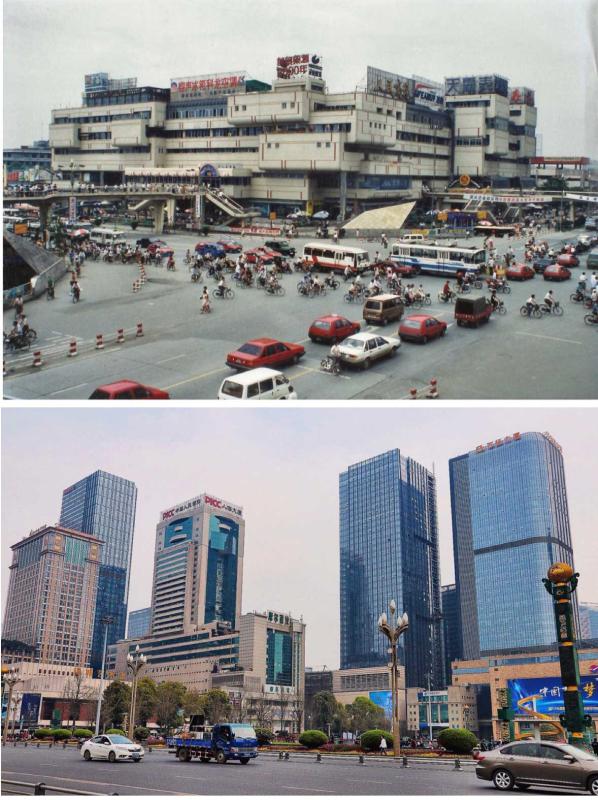
Chengdu modernity 1994 and 2017 (Photo by Bruce Connolly/chinadaily.com.cn)
Near the temple, a metro station facilitated smooth access to Tianfu Square which I had previously visited in 1994. Overlooked by Chengdu’s iconic statue of Chairman Mao Zedong, I gazed around at how commercial architecture had changed so much over a quarter century into the contemporary face of Sichuan’s capital. However something had not changed - the bicycles flowing along Renmin West Road except that today they were mostly shared bikes.
The riverside cafes I had visited so long ago have disappeared but nearby sits a modern development I have frequently praised. The Taikooli complex combines traditional Chengdu architecture with contemporary design, so creating an excellent example of a lifestyle experience encompassing retail, dining and hotel in a traffic free environment easily accessed by metro. Last spring, 2017, I had arrived by high-speed train from Chongqing to Chengdu's large, recently completed East Station before transferring by metro toward the Tibet Hotel. From there back in 1994 I checked out, traveling onward by bus to Leshan, embarking on a lengthy river journey down to Wuhan. In 2017, I left that same hotel walking up Renmin Road to board train T8 on a journey of rediscovery back up the same line I travelled on a quarter century previously.
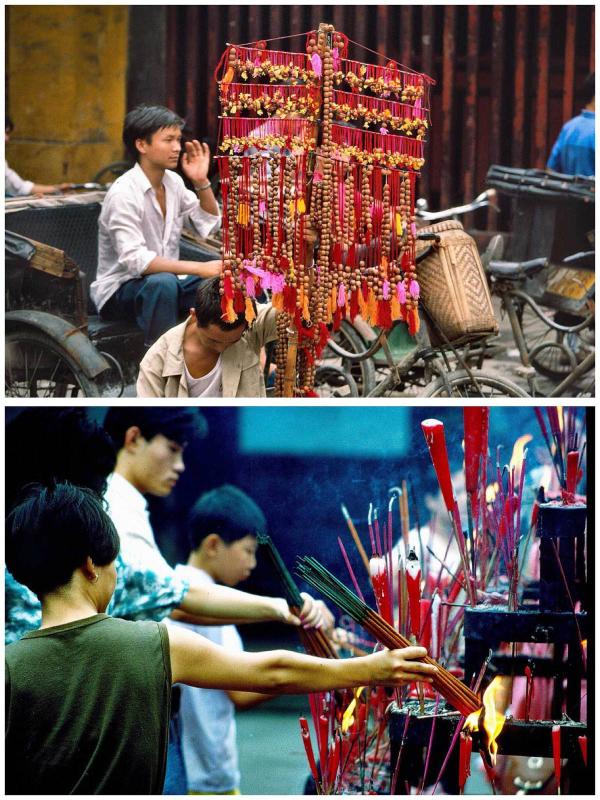
Wenshu Yuan Temple - trader and incense stick burning 1994 (Photo by Bruce Connolly/chinadaily.com.cn)








